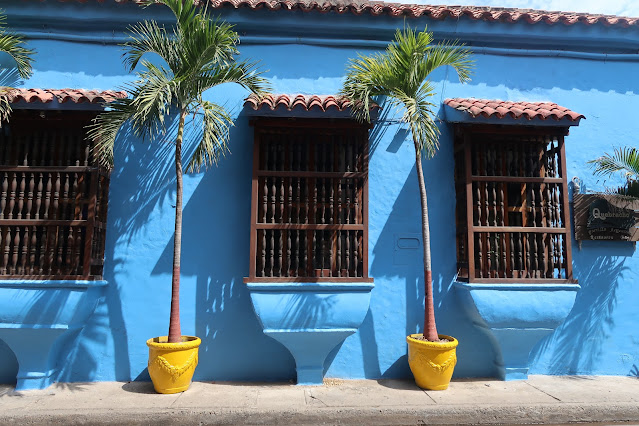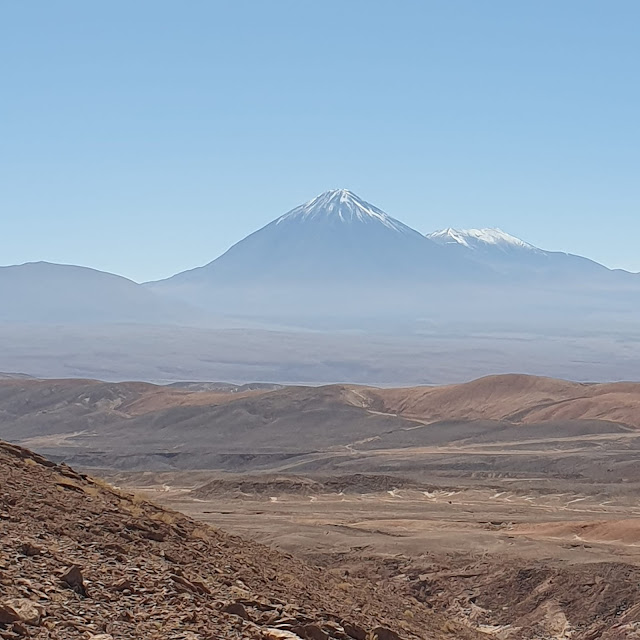Lake Titicaca and Isla del Sol....and hail
Our first close up view of the highest navigable lake in the world was at The Tiquina Straits. Here you have to cross a small section of the lake to reach Copacabana,which although still part of Bolivia is attached to the Peruvian land mass bordering Lake Titicaca.
We had taken a bus from La Paz, which at this point we were all asked to disembark but to leave our belongings on board, the bus would meet us on the other side. We paid two Bolivianos (25p) each to hop on a small boat that took us safely across. From here we had a view of the most incredible sight that would have any Health and Safety expert, not to mention owner of a bus company in the UK, crying. Our large bus was driven onto a small flat barge on which it appeared to teeter across the straits.
We were staying in Copacabana, the original one....not the Barry Manilow one or the beach in Rio, which lies on the shores of Lake Titicaca. The Brazilian beach is named after this small town, I'm not sure why, I suspect they couldn't be more different. This Copacabana reminded me of a Greek village but with half built houses that were red not white, horrendous roads, many more dogs and an abundance of litter. I would not describe it as charming, though it's setting was beautiful, but it had a certain appeal. It felt more real. This may have been as there were so few tourists. Clearly set up to accommodate, feed and transport out onto the lake, large amounts of tourists, there were actually very few. We discovered that this was due to the problems in Peru. Like us, most people have cut Peru out of their plans this year due to sporadic violent demonstrations, the worst of which are in Puno, just over the border from Copacabana. This had dried up the usual gringo trail from Cusco and Macchu Pichu to Puno then onto La Paz via Copacabana. Although a more pleasant experience for us, this is really far from ideal for the people living there. We have since heard via the traveller grapevine that things are settling down in Peru as those protesting are hurting themselves more than anyone else due to the lack of tourists. What a catch 22 for them, as how do they effect the change they desire. I digress.
However we could hardly describe it as quiet. Whereas Carnavale finished in La Paz on Tuesday, it was still in full swing in Copacabana and continued to be so for the four nights we stayed. In La Paz it had been a full carnival procession, here it was more akin to an ongoing French village summer fete, but with pan pipes rather than an accordion. I've got to tell you, there is only so much of pan pipes and drums you can enjoy listening to. Richard was at one point encouraged to join in, with a pan pipe and beer thrust at him as we walked through. Our first night there they were still going at 2am. This was also the night Bolivian belly decided to hit me, so at 8am when a small band of revellers, who had probably been up all night, decided to start up playing again on the roof of a house just below our balcony, I had what we might describe as a distinct sense of humour failure.
Our first meal we took in one of a string of shore front shacks with plastic chairs and tables, all serving trout from the lake in any number of ways. Quite delicious and cheap. Even my, "fish with bones" averse, travel companion had to agree.We had planned some rest, admin and washing time here, staying true to our pootling philosophy, so it was lovely to have a room with a balcony looking right across the lake. We were blessed (Pachamama, Incan sun god, Catholic god??) with sunshine for most of our stay, though quickly discovered at 3800m, where the air is much thinner, you burn very quickly.
Time for some facts. Titicaca, the largest lake in South America, straddles Bolivia and Peru high in the Andes mountains and its waters are famously still and reflective(thanks Wikipedia). We can attest to this, on the whole. The Incas believed it to be the centre of the world and the Isla del Sol to be the birthplace of their sun god. They also believed the first Incans arose from there.
We had planned to spend one of our four nights in the island. The boat dropped us off at Yumani on the south of the island.
There are no paved roads or vehicles on the island. Just mules, llama, the occasional pig and some extremely well trained sheep we spotted trotting along ahead of their owner taking the right turns without any shouts or a dog. As previous sheep owners/chasers we were in awe.
As we disembarked it became immediately apparent that what we had read was true, it was a very steep climb up to the village. Not funny at this altitude. We arrived at the same time as a boat full of residents weighed down with goods from the mainland.
They used the mules to carry their stuff up. We decided to be brave soldiers and carry our very slimmed down rucksacks up ourselves. Near the top we were hustled by a 4 year old wanting to show us the way to our hostel. This was one of those rare moments where "Los siento, no hablo espanol" worked in our favour.
We were greeted by the owner of the hostel, which was basically three rooms in his back garden with an outside toilet (did I mention the Bolivian Belly?) and non functioning shower. We were offered our pick of all three. He then managed to convey to us that he had to go and meet his wife off the boat so for us to go out for an explore and come back later to pay and share passports etc. What an excellent decision that was.
The following day we had decided to hike the 11km length of the island to catch the boat back to the mainland from Challapampa at the northern end.
We were lucky as for the last four years the northern and central parts of the island have been closed to tourists due to a dispute between the different communities. Only in the last month or so has this been resolved. We were very glad as it was a spectacular walk along the spine of the island with panoramic views of the Incan terracing and surrounding lake.
At Challapampa we caught what we thought was a direct boat back to Copacabana. It turned out, however, that we had been put on a day tour boat, presumably not enough people to make it worth running the direct boat, after all we had only seen two other couples the entire walk. This tour was stopping at the "Isles Flottante". This has to be the most tacky, in fact the only tacky and blatantly touristy thing we have seen so far in our travels. It was basically a pontoon on which they had mounted kitsch straw huts and served trout. We didnt partake but to give them their due it was very fresh. Diners chose their trout as it was swimming in the nets below. The Bolivians really need to concede that the Peruvians probably have the hold on floating islands with Uros, to not try to compete and capitalise on Isla del Sol and Isla del Luna. It gave us a giggle anyway.
We had our first travelling hitch the day after we got back to the mainland, as we were packing up to catch the bus back to La Paz. I checked the tickets only to find they were for the day before. No hassle though, Richard was totally calm (yes really) and we just bought two more for the right day. The return across the Tiquina straits proved Wikipedia to be wrong about the calm and still nature of the lake. I did think we might lose the bus and I didn't enjoy being stuck inside the nose end of our boat (still never know, or care, which is stern and which is bows), albeit for only ten minutes.
So back to the frenzy of La Paz. We had enjoyed our trip up to Lake Titicaca and were particularly grateful for the tranquility of Isla del Sol.


















Comments
Post a Comment